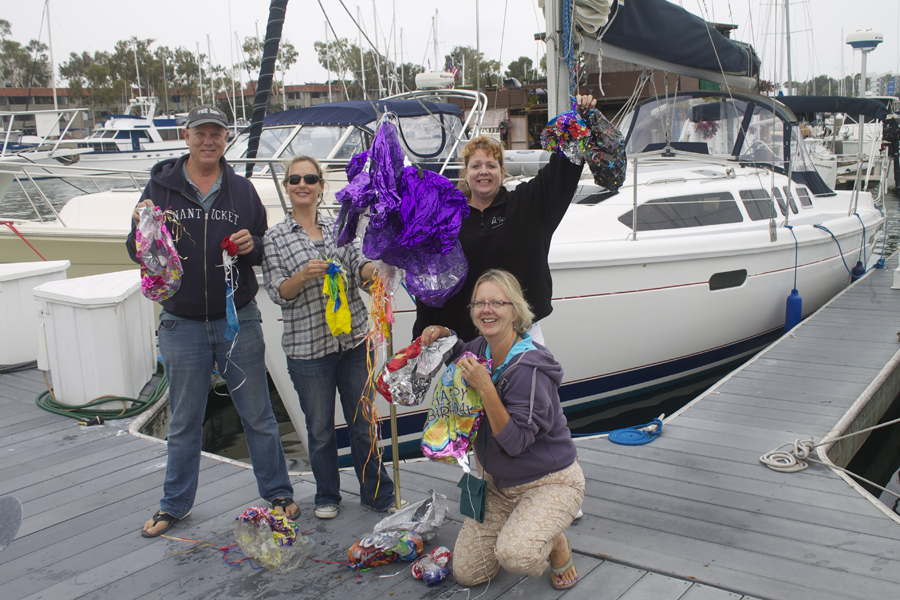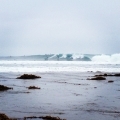To present an alternative to the Discovery Channel’s Shark Week (and cult TV movies like Sharknado), Heal the Bay staff write about the marine animals they love so much. The general public has been fed terrifying misconceptions about these creatures, and our mission is to raise awareness about the unique and important role sharks play in our local ocean ecosystem.
Do the recent gloomy summer mornings have you transiting the streets of L.A. in fear that a Sharknado may pop out of the sky? Hopefully not. But, you also probably aren’t considering the ocean action being displayed in the Bay by our local shark ninja, the thresher shark. Threshers just might be deserving of their own action film.
Threshers are best known for their trademark tail fin that has an upper lobe so long that it makes up half of the shark’s length and a third of their body weight. While threshers typically travel alone, it’s not uncommon to find them in the Santa Monica Bay. They are frequently found off the coast of Malibu, and although they prefer offshore waters, last month anglers on the Venice Pier caught a few thresher sharks.
Threshers live in tropical and temperate waters throughout the world. But, the secrets of their ninja-like tail have been difficult to unveil. Scientists have long wondered how they use their strikingly long tail fin. In the past year, this understanding has advanced. Recent findings show that threshers often use their tail to strike and stun fish before eating them. A diver in the Philippines also recently filmed a thresher using its tail to hunt — whipping and stunning a school of sardines. This marks the first video recording of the thresher’s tail slapping feeding behavior.
Thresher sharks are not dangerous to people, in fact, we are lucky to have such an interesting predator living the Santa Monica Bay. And, it’s just one of over 30 species of cartilaginous sharks, rays, and skates (known scientifically as “elasmobranchs”) that live in or pass through the Bay – ranging from the cartoon-like shovelnose guitarfish to the speedy shortfin mako shark. The diversity of habitats in the Bay helps provide food and shelter for these sharks, skates, and rays.
Many of these species are doing well locally, but unfortunately, sharks aren’t faring so well globally. The International Union for Conservation of Nature (IUCN) estimates that 30% of shark and ray species globally are threatened or near-threatened with extinction. Unfortunately, the inhumane practice of shark finning is one of the biggest threats to elasmobranchs – up to 73 million sharks are killed each year to support the global shark fin industry.
California has been a significant market for shark fin in the past, which catalyzed the enactment of AB 376, state legislation that prohibits the possession, sale, and distribution of detached shark fins in California. Regrettably, the US government is considering a measure that would threaten California’s shark fin law, along with similar shark protections passed by several other states.
Please make your voice heard by signing this online petition to tell your representative to keep state shark fin trade laws intact.
— Sarah Sikich
Heal the Bay’s Coastal Resources Director, Science & Policy




 It’s too bad the questionable water quality haunts the minds of most surfers at Malibu, which is why California Swimmable Day is important – it reminds us that all beaches should be safe for swimming, and that clean-up efforts at dirty beaches need to be implemented to meet this goal. Sometimes it’s hard to stay out of the surf after a rain, especially with a nice storm swell, but the risk versus reward has to be weighed.
It’s too bad the questionable water quality haunts the minds of most surfers at Malibu, which is why California Swimmable Day is important – it reminds us that all beaches should be safe for swimming, and that clean-up efforts at dirty beaches need to be implemented to meet this goal. Sometimes it’s hard to stay out of the surf after a rain, especially with a nice storm swell, but the risk versus reward has to be weighed.